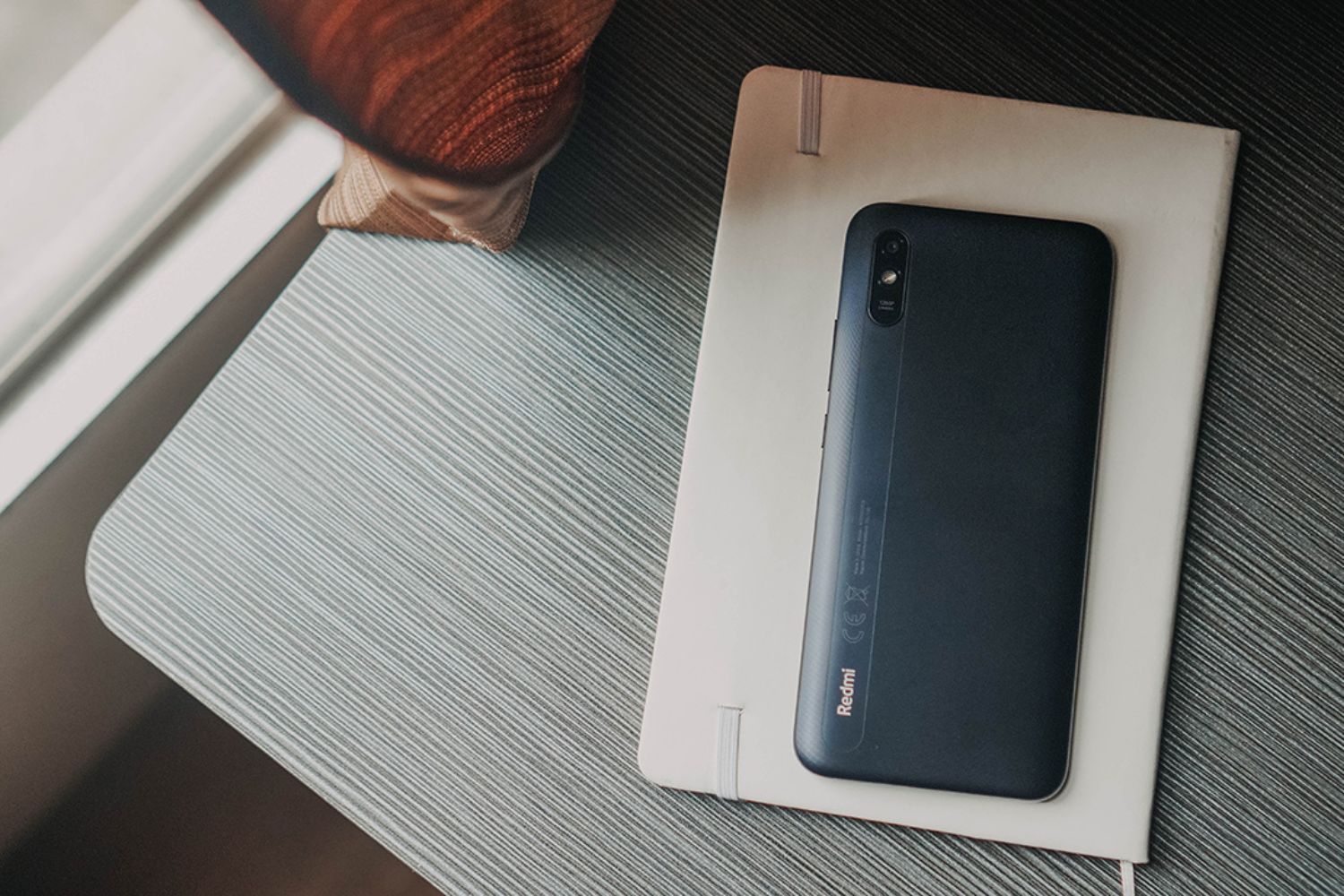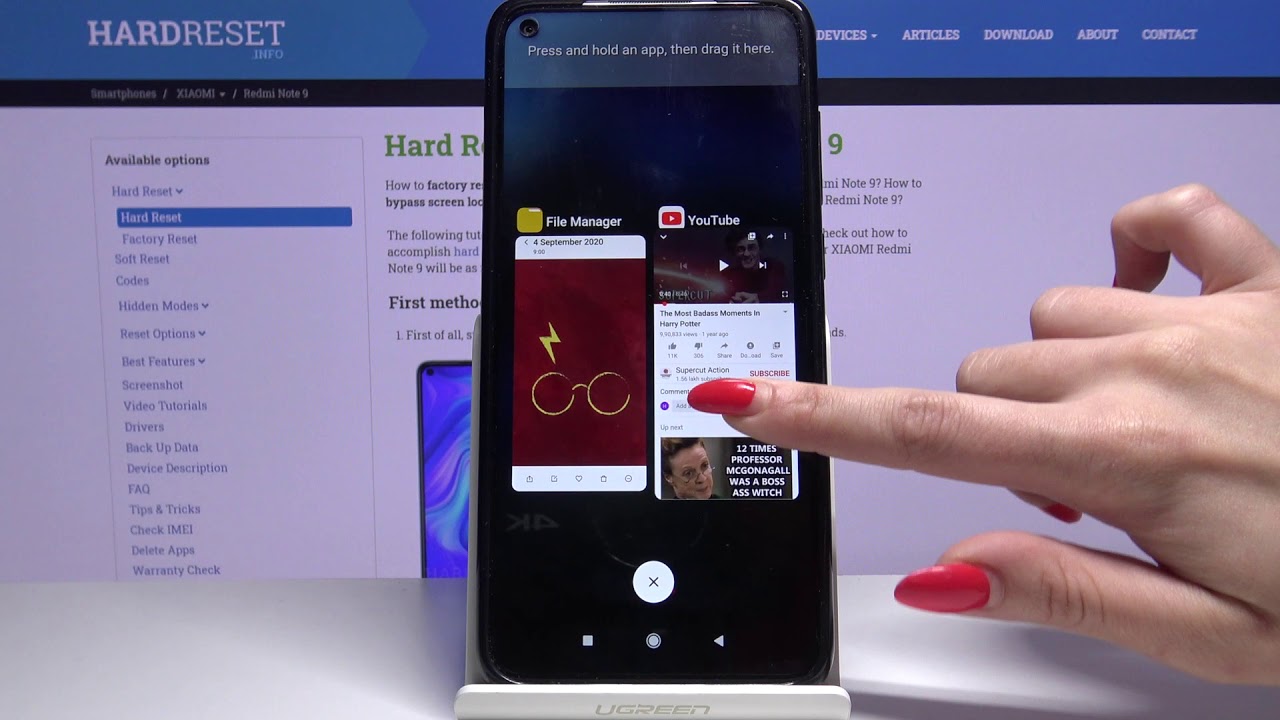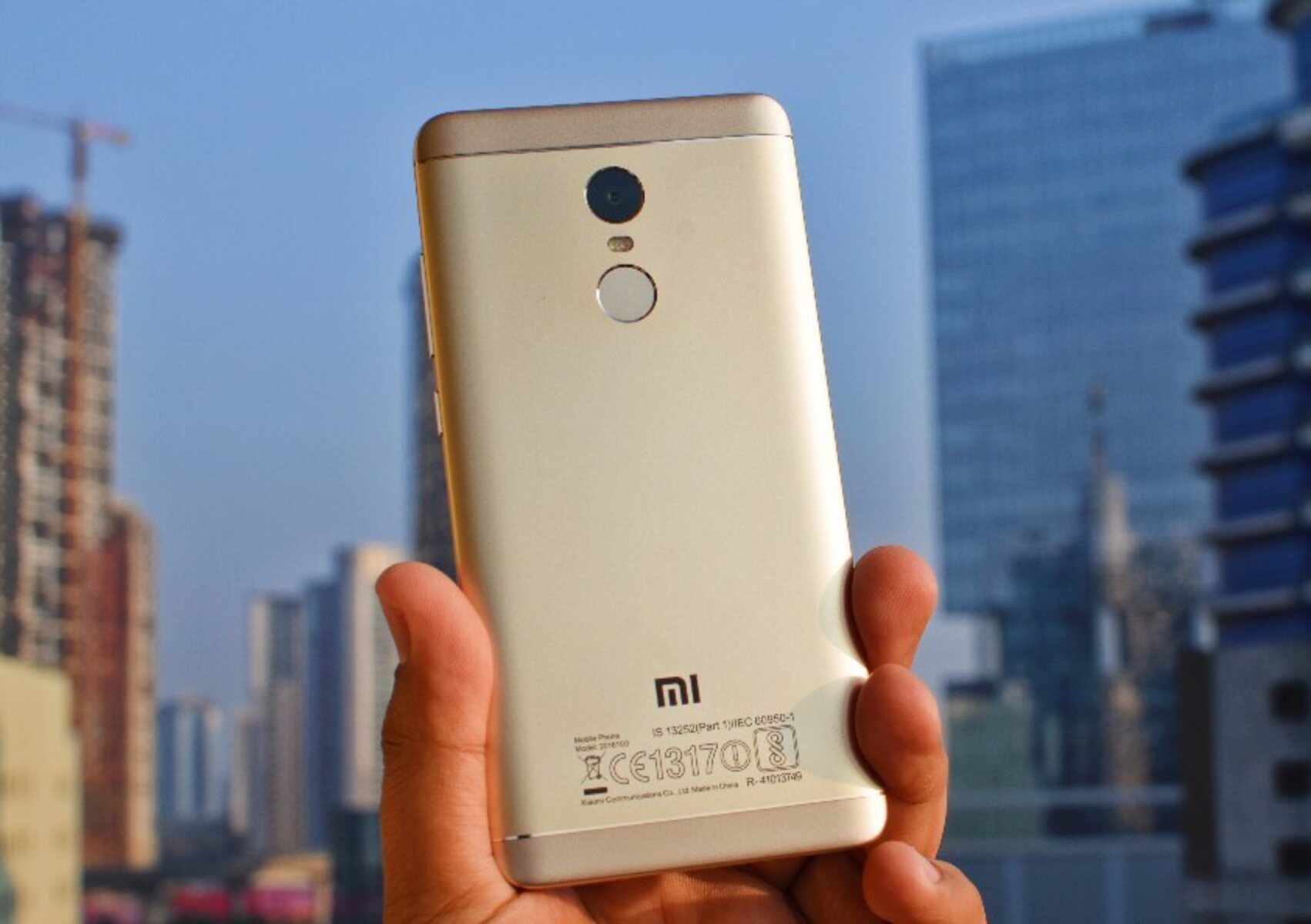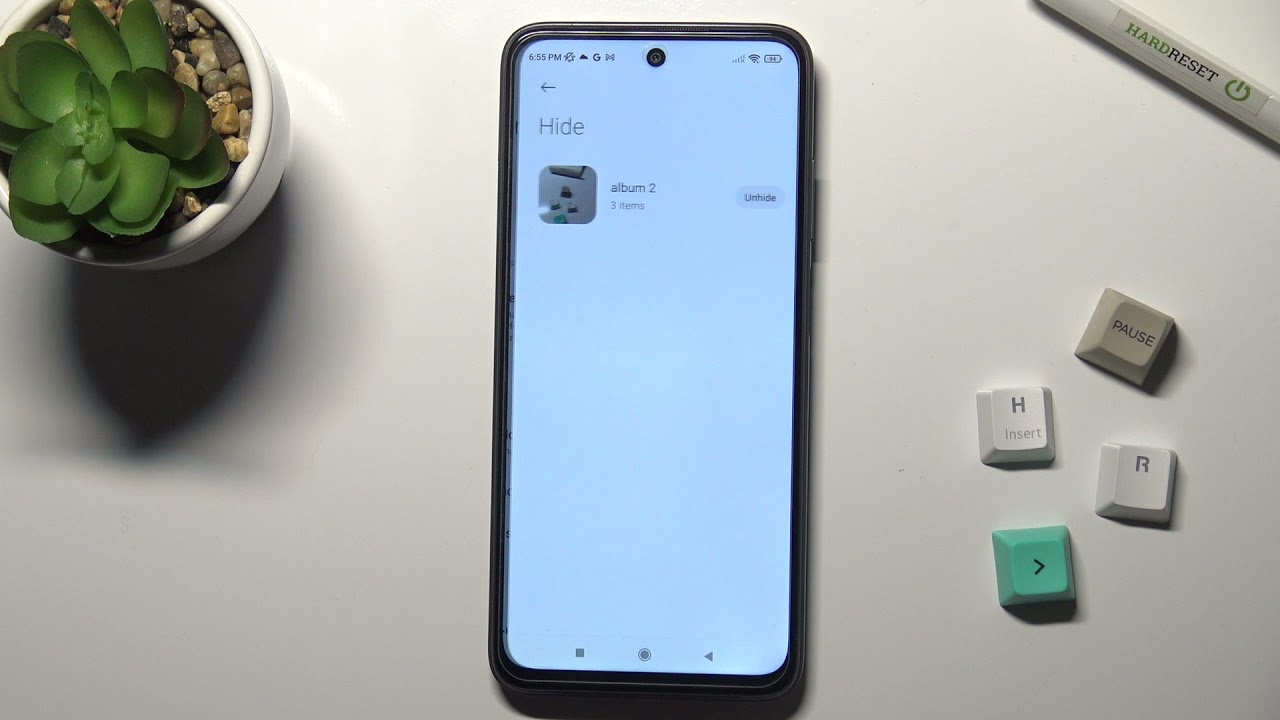Introduction
Resetting your Redmi Note 9 can be a powerful solution to various issues that may arise during the course of using your device. Whether you're experiencing persistent software glitches, performance slowdowns, or simply wish to erase all personal data before passing on the device, a reset can help restore your Redmi Note 9 to its original state. This comprehensive guide will walk you through the process of resetting your Redmi Note 9 effectively, ensuring that you can address any concerns and optimize the performance of your device.
Resetting your Redmi Note 9 is a straightforward process, but it's essential to understand the implications and take the necessary precautions before proceeding. By following the steps outlined in this guide, you can confidently navigate the reset process and make informed decisions about the future use of your device. Whether you're a seasoned Redmi Note 9 user or a newcomer to the world of mobile devices, this guide will equip you with the knowledge and skills to reset your device with ease.
In the following sections, we will delve into the reasons why you might consider resetting your Redmi Note 9, the steps to prepare for the reset, the detailed process of resetting the device, and the essential post-reset actions to ensure a seamless transition. By the end of this guide, you will have a clear understanding of the reset process and the potential benefits it can bring to your Redmi Note 9 experience. Let's embark on this journey to optimize and rejuvenate your device, ensuring that it continues to serve you effectively in the long run.
Why Reset Your Redmi Note 9?
Resetting your Redmi Note 9 can serve as a powerful troubleshooting tool to address a variety of issues that may arise during the course of using your device. Here are some compelling reasons why you might consider resetting your Redmi Note 9:
-
Resolve Software Glitches: Over time, your Redmi Note 9 may encounter software glitches that can impact its performance and functionality. These glitches could manifest as unresponsive apps, system freezes, or unexpected errors. By performing a reset, you can effectively clear out any underlying software issues and restore the device to a stable state.
-
Improve Performance: If you've noticed a decline in the overall performance of your Redmi Note 9, such as sluggish response times or frequent app crashes, a reset can help revitalize the device. By resetting the device, you can remove unnecessary clutter and optimize its operating system, potentially leading to improved speed and responsiveness.
-
Enhance Privacy and Security: Before passing on your Redmi Note 9 to someone else or recycling it, it's crucial to safeguard your personal data. Performing a reset ensures that all your personal information, including contacts, messages, and app data, is securely erased from the device, reducing the risk of unauthorized access to your sensitive information.
-
Prepare for a Fresh Start: Whether you're planning to sell or trade in your Redmi Note 9, a reset allows you to present the device in a clean and pristine condition. This can enhance its appeal to potential buyers and facilitate a seamless transition to a new owner.
-
Troubleshoot Persistent Issues: If you've exhausted other troubleshooting methods and your Redmi Note 9 continues to experience persistent issues, a reset can serve as a comprehensive solution. It provides a clean slate for the device, potentially resolving complex and recurring problems that have proven difficult to address through other means.
By understanding the various benefits of resetting your Redmi Note 9, you can make an informed decision about when and why to initiate the reset process. Whether you're seeking to address specific issues or simply optimize the performance and privacy of your device, a reset can be a valuable tool in maintaining the functionality and integrity of your Redmi Note 9.
Preparing to Reset Your Redmi Note 9
Before embarking on the process of resetting your Redmi Note 9, it's crucial to take several preparatory steps to ensure a smooth and successful reset. By carefully preparing for the reset, you can safeguard your data, address potential complications, and streamline the overall experience. Here's a detailed overview of the essential preparations to consider before resetting your Redmi Note 9:
Backup Your Data
One of the most critical preparatory steps before resetting your Redmi Note 9 is to back up your important data. This includes contacts, photos, videos, documents, and any other files that you wish to preserve. By creating a comprehensive backup, you can safeguard your valuable information and prevent any potential loss during the reset process. Redmi Note 9 offers various backup options, including cloud storage services and local backups to an external storage device. Ensure that your backup is up to date and encompasses all the data you want to retain.
Review App and Account Credentials
Before initiating the reset, it's essential to review the credentials for your apps and accounts on the Redmi Note 9. This includes noting down usernames, passwords, and any other authentication details that may be required to restore access to your accounts and services after the reset. By ensuring that you have the necessary credentials on hand, you can streamline the process of reconfiguring your device and accessing your essential apps and accounts post-reset.
Check for System Updates
To optimize the reset process and ensure that your Redmi Note 9 is running the latest software, it's advisable to check for any available system updates. Updating the device to the latest software version can address potential software issues and enhance the overall stability and performance of the device. By ensuring that your device is up to date, you can minimize the likelihood of encountering compatibility issues or software-related complications during or after the reset.
Charge Your Device
Adequate battery power is essential to complete the reset process without interruptions. Before initiating the reset, ensure that your Redmi Note 9 is sufficiently charged or connected to a power source. This precaution can prevent any unexpected shutdowns during the reset, which could potentially lead to data corruption or incomplete reset procedures.
By diligently preparing for the reset of your Redmi Note 9, you can mitigate potential risks, safeguard your data, and streamline the overall reset experience. These preparatory steps lay the foundation for a successful reset, ensuring that you can proceed with confidence and peace of mind as you optimize and rejuvenate your device.
How to Reset Your Redmi Note 9
Resetting your Redmi Note 9 involves a series of steps to restore the device to its original factory settings. It's important to note that performing a reset will erase all data and settings on the device, so it's crucial to have a backup of your important data before proceeding. Here's a detailed guide on how to reset your Redmi Note 9 effectively:
Step 1: Access the Settings Menu
Begin by unlocking your Redmi Note 9 and navigating to the home screen. From there, locate and tap on the "Settings" app, which is represented by a gear icon. The Settings app provides access to various device management and customization options, including the reset functionality.
Step 2: Navigate to the Additional Settings
Within the Settings menu, scroll down and locate the "Additional Settings" option. Tap on "Additional Settings" to access a range of advanced device settings and management features. This section houses the reset option, allowing you to initiate the reset process for your Redmi Note 9.
Step 3: Select the Backup & Reset Option
Once in the Additional Settings menu, look for the "Backup & Reset" option and tap on it to proceed. The Backup & Reset section contains essential options for managing your device's data and initiating the reset process. It's important to review the available options and ensure that you have a recent backup of your data before proceeding with the reset.
Step 4: Initiate the Factory Data Reset
Within the Backup & Reset menu, locate the "Factory data reset" or "Erase all data (factory reset)" option. This is the primary reset function that will restore your Redmi Note 9 to its original factory state. Tap on this option to initiate the reset process.
Step 5: Confirm the Reset Action
Upon selecting the Factory Data Reset option, you will be prompted to confirm your decision. The device will display a warning message indicating that all data will be erased, and the device will be restored to its factory settings. Carefully review the information and proceed to confirm the reset action.
Step 6: Enter Your Device's Security PIN
To prevent unauthorized access to the reset function, you may be required to enter your device's security PIN, pattern, or password. This additional security measure ensures that only authorized users can initiate the reset process. Enter the required security credentials to proceed with the reset.
Step 7: Initiate the Reset Process
After confirming the reset action and entering the necessary security credentials, your Redmi Note 9 will begin the reset process. This may take several minutes to complete, during which the device will erase all data, reset all settings, and restore the device to its original factory state.
Step 8: Set Up Your Device
Once the reset process is complete, your Redmi Note 9 will reboot and present the initial setup screen. Follow the on-screen instructions to configure your device, including language selection, Wi-Fi setup, and account sign-in. If you have a backup of your data, you can choose to restore it during the setup process.
By following these step-by-step instructions, you can effectively reset your Redmi Note 9 and restore it to its original factory settings. It's important to exercise caution and ensure that you have a backup of your important data before proceeding with the reset. Additionally, be mindful of the implications of resetting your device, as all data and settings will be permanently erased during the process.
What to Do After Resetting Your Redmi Note 9
After successfully resetting your Redmi Note 9, there are several essential steps to take to ensure a seamless transition and optimal functionality of the device. Here's a comprehensive guide on what to do after resetting your Redmi Note 9:
Restore Your Data
If you created a backup of your data before initiating the reset, now is the time to restore it to your Redmi Note 9. Utilize the backup you previously made to recover your contacts, photos, videos, documents, and other essential files. Redmi Note 9 offers convenient options to restore data from cloud storage or local backups, allowing you to seamlessly retrieve your information and personalize your device once again.
Reconfigure Settings and Preferences
With your Redmi Note 9 reset to its factory state, you have the opportunity to reconfigure settings and preferences according to your preferences. Take the time to customize the device's display, sound, security, and other settings to align with your usage habits and preferences. This step allows you to tailor the device to your specific needs and optimize the user experience.
Update System and Apps
After resetting your Redmi Note 9, it's advisable to check for system updates to ensure that the device is running the latest software version. Keeping the device up to date with the latest firmware and security patches can enhance its performance, address potential vulnerabilities, and introduce new features. Additionally, update your apps from the Google Play Store to ensure that you have the latest versions with improved functionality and security enhancements.
Secure Your Device
As you set up your Redmi Note 9 post-reset, it's crucial to prioritize the security of the device. Ensure that you have activated security features such as screen lock, fingerprint recognition, or facial recognition to safeguard your data and prevent unauthorized access. Consider enabling device encryption to protect your information from unauthorized access in the event of loss or theft.
Reinstall Essential Apps and Accounts
Reinstall any essential apps that you rely on for productivity, communication, entertainment, and other purposes. Additionally, reconfigure and sign in to your accounts within the apps to regain access to your services and data. This step ensures that you can seamlessly resume your digital activities and stay connected after the reset.
By following these post-reset actions, you can effectively restore your Redmi Note 9 to a personalized and secure state, ensuring that it continues to meet your needs and expectations. These steps empower you to leverage the full potential of your device and maintain a smooth and efficient user experience.
Conclusion
In conclusion, the process of resetting your Redmi Note 9 is a valuable tool for addressing various issues, optimizing performance, and ensuring the privacy and security of your device. By understanding the reasons for resetting, preparing diligently, executing the reset process effectively, and taking essential post-reset actions, you can rejuvenate your Redmi Note 9 and maintain its functionality in the long run.
Resetting your Redmi Note 9 empowers you to resolve software glitches, improve performance, enhance privacy and security, prepare for a fresh start, and troubleshoot persistent issues. These compelling reasons underscore the significance of the reset process in addressing a wide range of concerns that may arise during the device's usage.
The preparatory steps before resetting your Redmi Note 9, including data backup, review of app and account credentials, system updates, and ensuring adequate battery power, are crucial in safeguarding your data and streamlining the reset experience. These preparations lay the groundwork for a successful reset and provide peace of mind as you initiate the process.
The detailed guide on how to reset your Redmi Note 9 effectively offers a step-by-step approach to navigate the reset process with confidence. By accessing the settings menu, initiating the factory data reset, and confirming the reset action, you can execute the reset process seamlessly and restore your device to its original factory settings.
After resetting your Redmi Note 9, the post-reset actions, including data restoration, settings reconfiguration, system and app updates, device security, and app reinstallation, are essential in ensuring a smooth transition and optimal functionality of the device. These steps empower you to personalize the device, enhance its security, and resume your digital activities seamlessly.
In essence, resetting your Redmi Note 9 is a proactive measure to address concerns, optimize performance, and maintain the integrity of your device. By leveraging the insights and guidance provided in this comprehensive guide, you can confidently navigate the reset process and unlock the full potential of your Redmi Note 9, ensuring a rewarding and seamless user experience.

























